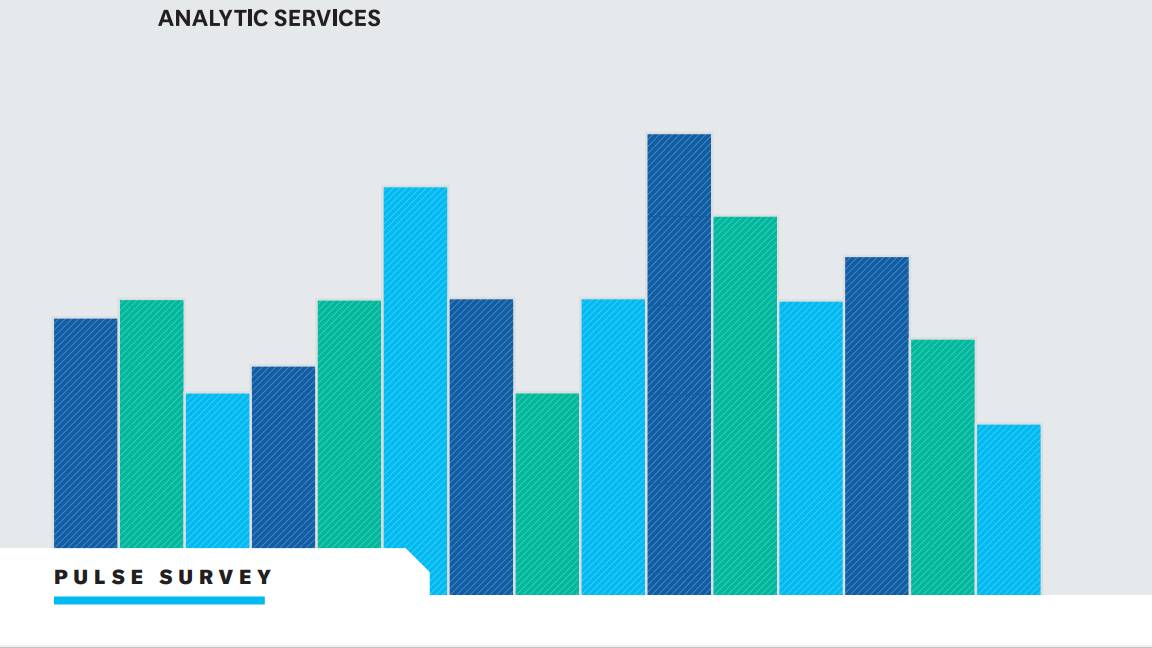The 12 most in-demand tech jobs
Looking to future proof your career? These are the roles that are likely to stay relevant for many years to come


- 12. IT Support Specialist
- 11. Systems Analyst
- 10. IT Systems Manager (including CIOs and IT directors)
- 9. Software Quality Assurance (QA) Tester
- 8. User Experience (UX) Designer
- 7. Software Developer
- 6. Software Engineer
- 5. Cyber Security Analyst
- 4. Cyber Security Engineer
- 3. Database Architect
- 2. Data Analyst
- 1. Data Scientist
The IT job market is ever-changing and the skills that are needed today may not be in demand tomorrow. The fast-paced nature of the tech industry means it can pay to keep an eye on which roles companies are expected to hire for in the long-term.
To help guide you in making the right decisions regarding your career in IT, we’ve pulled together some of the most-in demand tech roles in the US market that are expected to benefit from tech trends over the next decade.
Although we focus on the US job market here, most of these jobs will be similarly in high demand across the world, and will likely feature on our list of the highest paid technology jobs.
How we picked our most in-demand tech jobs list
These roles have been picked based on the most in-demand jobs right now, according to the Computing Technology Industry Association’s (CompTIA) State of the Tech Workforce 2023 report, which was released in 2023.
Where possible, we matched these roles to the latest median salaries and long-term job growth prospects from the US Bureau of Labor Statistics.
This list isn’t exhaustive by any means, but you can use it as a guide to understand which roles companies are likely to hire for in the coming years and how you can future proof your career.
The most in-demand tech jobs
12. IT Support Specialist
| Role overview | Header Cell - Column 1 |
|---|---|
| Median base salary | $59,660 |
| CompTIA’s projected growth | 2.4% |
| BLS growth outlook | 5% (faster than average) |
IT support specialists may receive the lowest pay out of the roles listed by CompTIA, but they are growing ever more important as companies accelerate their digital transformation ambitions and move their business functions to the cloud.
The role entails carrying out regular checks to ensure everything is in working order so that employees can be as productive as possible. It will also involve an understanding of how the latest technologies can integrate into a business’ system and training end-users on hardware and software programmes.
Sign up today and you will receive a free copy of our Future Focus 2025 report - the leading guidance on AI, cybersecurity and other IT challenges as per 700+ senior executives
11. Systems Analyst
| Role overview | Header Cell - Column 1 |
|---|---|
| Median base salary | $102,240 |
| CompTIA protected growth | 2.6% |
| BLS growth outlook | 10% (much faster than average) |
Systems analysts, sometimes referred to as systems architects, study a business’ current computer systems and then design IT solutions that will help the business to operate and perform more efficiently.
A broad understanding of hardware, software and programming languages is required. Languages like C++ and Java, can be particularly beneficial.
10. IT Systems Manager (including CIOs and IT directors)
| Role overview | Header Cell - Column 1 |
|---|---|
| Median base salary | $164,070 |
| CompTIA projected growth | 3.4% |
| BLS growth outlook | 15% (much faster than average) |
IT systems managers, including IT directors, are responsible for determining the direction of a business’ IT strategy. Duties include understanding IT needs, assessing the cost benefits of upgrades, and presenting them to the board in order to persuade them to commit the funding.
While IT systems managers need to use analytical and problem-solving skills, the role tends to place greater emphasis on soft skills and being able to communicate to C-level executives and stakeholders effectively.
The job has the highest salary of all those on CompTIA’ list, but demand is expected to grow at a slower pace than several other roles, hence its place near the bottom of this list.
9. Software Quality Assurance (QA) Tester
| Role overview | Header Cell - Column 1 |
|---|---|
| Median base salary | $124,200 |
| CompTIA’s projected growth | 4.1% |
| BLS job growth outlook | 25% (much faster than average) |
As long as software continues to be developed, then there will be demand for QA testers, whose responsibility it is to ensure that the software is reliable and working.
Given how many businesses now rely on software to run their day-to-day operations, QA testers are critical if software issues are to be fixed and patched swiftly in order to minimize business disruption.
Strong analytical skills are required to be able to identify, diagnose and resolve any defects.
8. User Experience (UX) Designer
| Role overview | Header Cell - Column 1 |
|---|---|
| Median base salary | $80,730 |
| CompTIA projected growth | 4.7% |
| BLS job growth outlook | 16% (much faster than average) |
The need for UX designers rose during the pandemic as more digital-first businesses popped up and launched mobile applications.

Demand is expected to steadily increase as UX has a more direct impact on revenue. UX designers are tasked with building an application or website that is easy to navigate and boosts engagement, as well as improving on legacy websites. The role involves evaluating the usability of applications and websites and making changes based on user feedback.
Although UX designers don’t need to code, some coding knowledge can help in understanding how the applications and websites being designed are made. It also makes communicating with developers easier.
7. Software Developer
| Role overview | Header Cell - Column 1 |
|---|---|
| Median base salary | $124,200 |
| CompTIA’s projected growth | 4.7% |
| BLS job growth outlook | 25% (much faster than average) |
Software developers are the creative brains behind software programmes. They are the ones who take an idea from conceptualisation to design to implementation. You will need to be able to debug any issues that arise during the development process.
You’ll need knowledge of coding and programming languages, including Java, C++ and Python. Project management experience can also be helpful.
6. Software Engineer
| Role overview | Header Cell - Column 1 |
|---|---|
| Median base salary | $124,200 |
| CompTIA’s projected growth | 4.7% |
| BLS job growth outlook | 25% (much faster than average) |
The role of the software engineer may often overlap with that of the software developer (number seven on this list) – and the terms are sometimes used interchangeably – but generally speaking this role is more technical.
The role is responsible for creating the underlying architecture that powers the software that’s being developed.
5. Cyber Security Analyst
| Role overview | Header Cell - Column 1 |
|---|---|
| Median base salary | $112,000 |
| CompTIA’s projected growth | 5.2% |
| BLS job growth outlook | 32% (much faster than average) |
As more businesses adopt emerging technologies and execute digital transformation strategies, they’re going to face an increasing number of cyber security challenges. It’s no surprise then that cyber security is expected to add 53,200 jobs to the US economy by 2032.
Cyber security analysts play a critical role in ensuring that businesses’ networks are secure. They need to stay up-to-date with the latest security trends and use analytical and problem-solving skills to detect potential flaws.
4. Cyber Security Engineer
| Role overview | Header Cell - Column 1 |
|---|---|
| Median base salary | $120,000 |
| CompTIA’s projected growth | 5.2% |
| BLS job growth outlook | 32% (much faster than average) |
Cyber security engineers are primarily focused on designing and implementing security architecture. They will work closely with cyber security analysts (number five on our list), who can provide them with necessary feedback to improve security systems and address any vulnerabilities.
The role will involve simulating authorized attacks on systems to evaluate security performance and pinpoint any weaknesses.
3. Database Architect
| Role overview | Header Cell - Column 1 |
|---|---|
| Median base salary | $112,120 |
| CompTIA’s projected growth | 5.5% |
| BLS job growth outlook | 8% (faster than average) |
Database architects are senior professionals who set the vision for a business’ use of data through designing the data blueprints and defining data standards. Along with data engineers, database architects are responsible for the infrastructure that will collate and house data securely in order for it to be analysed and interpreted by data scientists and data analysts.
Despite their importance, the BLS is forecasting long-term demand for database architects to be significantly lower than for data analysts and data scientists, which will be the most in-demand roles over the next 10 years or so.
2. Data Analyst
| Role overview | Header Cell - Column 1 |
|---|---|
| Median base salary | $103,500 |
| CompTIA’s projected growth for 2023: 5.5% | 5.5% |
| BLS job growth outlook | 35% (much faster than average) |
Data analysts are the experts who can help businesses to make sense of data and make data-driven decisions that lead to tangible results. They take insights gleaned from data and present them to the board and other stakeholders in a digestible manner. The role will typically involve preparing reports and using dashboards to present data.
The BLS doesn’t provide statistics on data analysts specifically, but given how the role is closely related to that of a data scientist – and arguably one wouldn’t be able to exist without the other – we can presume that the long-term job growth will be similar.
1. Data Scientist
| Role overview | Header Cell - Column 1 |
|---|---|
| Median base salary | $103,500 |
| CompTIA’s projected growth | 5.5% |
| BLS job growth outlook | 35% (much faster than average) |
When we first compiled this list back in 2021, the BLS job growth outlook was just 13%. But, unsurprisingly, with the advent of generative AI and the rise in the number of businesses leveraging it, the number of data science roles available in the US is expected to rise to 229,300 by 2032 from 168,900 in 2022.
Data scientists’ expertise is required to extract, analyse and interpret data from both structured and unstructured sources, while their keen eye for detail is essential for being able to spot patterns, identify trends and flag any anomalies in the data.
Among the essential skills needed for this role are statistical analysis, machine learning, programming, and data storytelling.
Rich is a freelance journalist writing about business and technology for national, B2B and trade publications. While his specialist areas are digital transformation and leadership and workplace issues, he’s also covered everything from how AI can be used to manage inventory levels during stock shortages to how digital twins can transform healthcare. You can follow Rich on LinkedIn.
-
 CRINK attacks: which nation state hackers will be the biggest threat in 2026?
CRINK attacks: which nation state hackers will be the biggest threat in 2026?In-depth The past year has seen a number of attacks performed by China, Russia, Iran and North Korea (CRINK)
-
 Samsung Galaxy S25 FE review
Samsung Galaxy S25 FE reviewReviews A big bright display, all-day battery, and some super premium cameras make this a superb handset for office bods
-
 2024 State of procurement report
2024 State of procurement reportWhitepaper The trends shaping the future of business buying
-
 Digital optimisation paves the way to strategic supplier management
Digital optimisation paves the way to strategic supplier managementWhitepaper Procurement’s role as a strategic driver
-
 The small and medium business guide to buying
The small and medium business guide to buyingWhitepaper Optimising purchasing to save in 2024
-
 Move your organisation forward by refining your strategic procurement plans
Move your organisation forward by refining your strategic procurement plansWhitepaper An Executive’s Guide to Purchasing in 2024
-
 Accelerate full-stack web and mobile app development
Accelerate full-stack web and mobile app developmentWhitepaper Three tips proven to help teams build modern apps faster
-
 Automate personalization with AWS
Automate personalization with AWSWhitepaper How marketers can automate, deliver, and analyze billions of personalized messages and offers per day
-
 How a hyper-automation platform can drive value for your bank
How a hyper-automation platform can drive value for your bankWhitepaper Five ways automated processes can drive revenue and growth
-
 Appian wants to be the AI company for AI skeptics
Appian wants to be the AI company for AI skepticsAnalysis The firm outlines its AI strategy at Appian World 2023 while using ChatGPT and Midjourney to create scripts and imagery for keynote presentations

